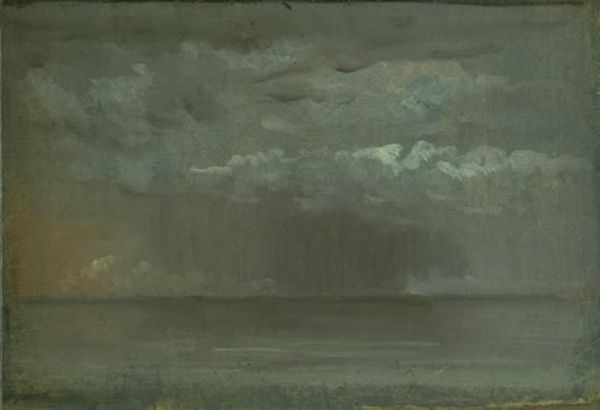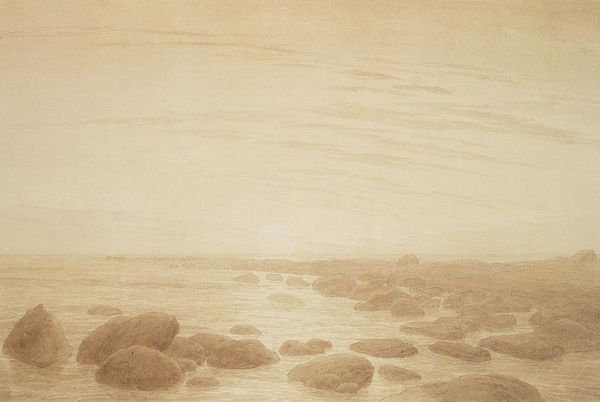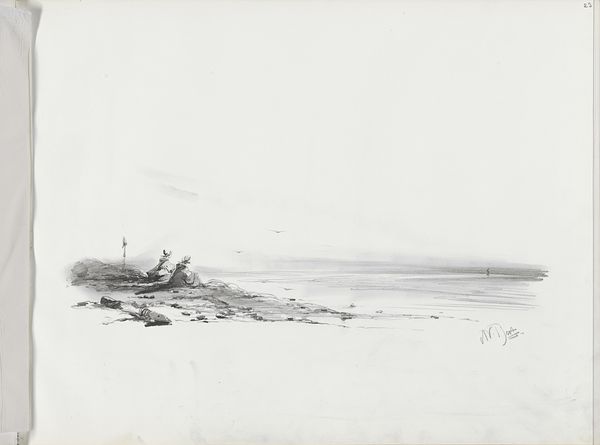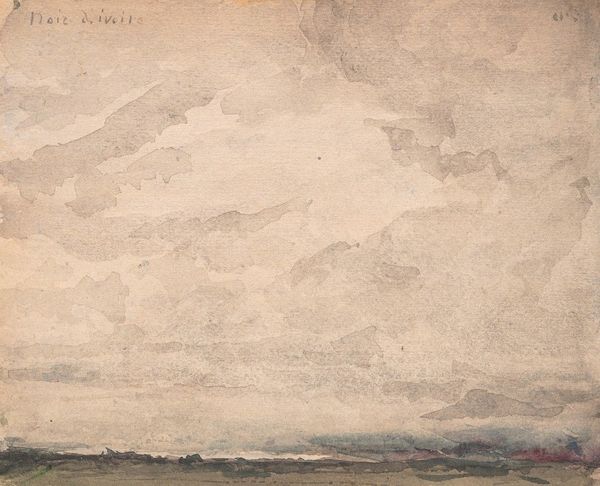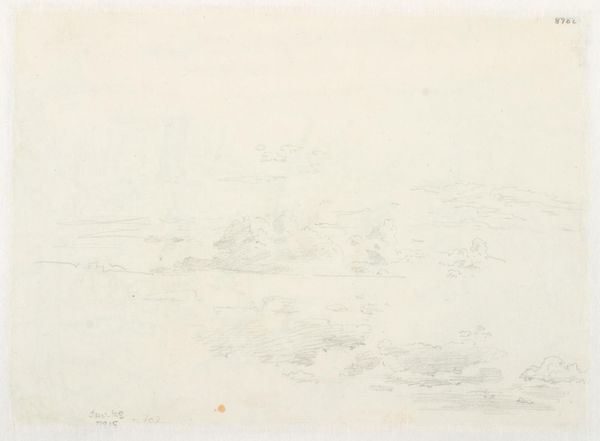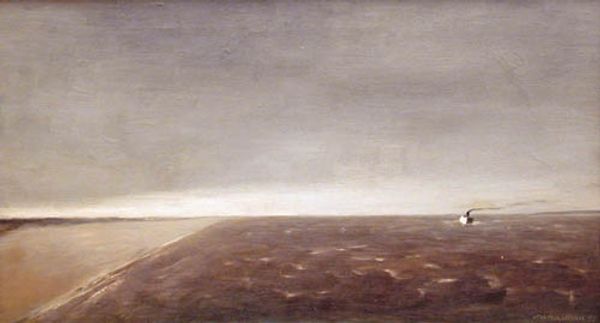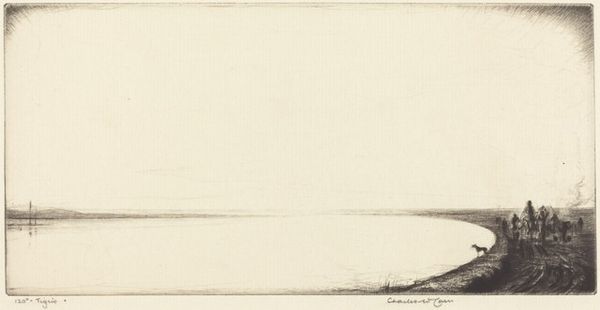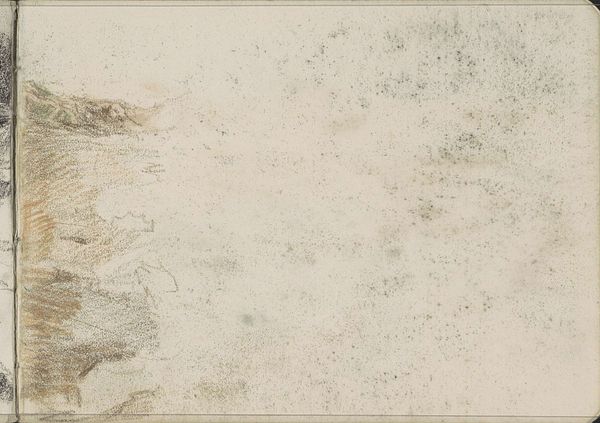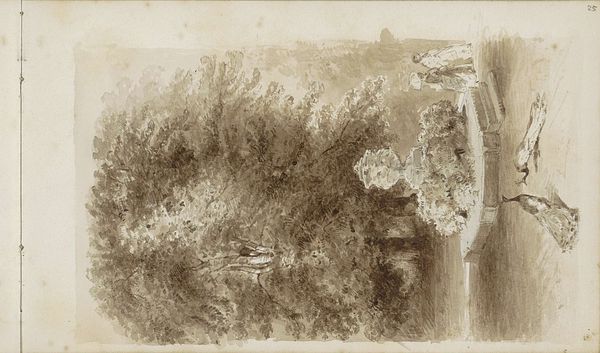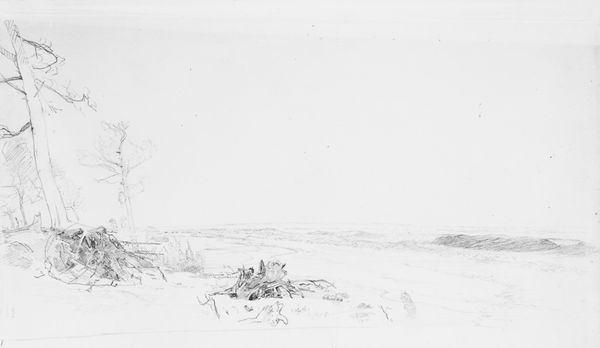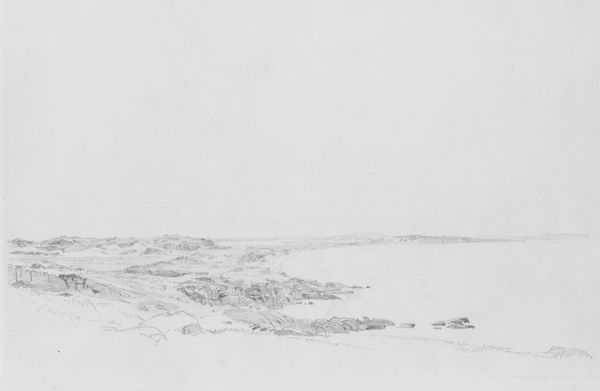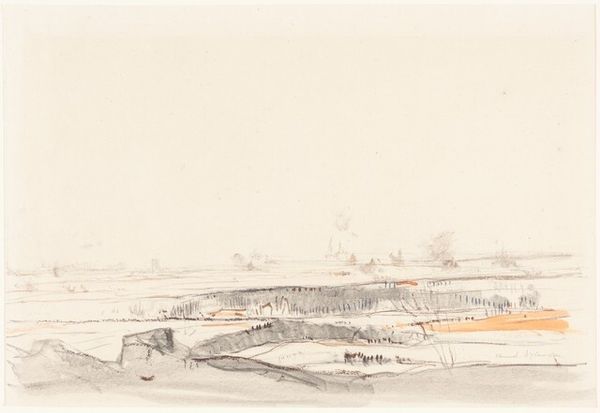
drawing, paper, graphite
#
drawing
#
boat
#
landscape
#
paper
#
oil painting
#
romanticism
#
graphite
#
charcoal
#
watercolor
#
monochrome
Copyright: Public domain
Editor: We’re looking at Caspar David Friedrich’s "Boat on the Shore. Moonrise," created around 1839. It's a drawing done with graphite and other materials on paper, now held at the Hermitage. The scene has a stillness to it; a quiet melancholy. What do you see when you look at this, what story does it tell you? Curator: Oh, it's funny you say stillness because that's exactly what sings to me. To me it's as though all time has slowed down. It’s more of a feeling really than a story - a feeling of vastness. Do you notice how Friedrich plays with light and shadow here? The moon, though barely visible, casts this subtle, almost dreamlike glow upon everything. It whispers of eternity, doesn't it? Editor: Definitely a whisper. And I love that: eternity! Is the boat part of that, you think? It seems so...stuck. Curator: Absolutely! That boat, stranded between the land and the sea, is all of us, isn’t it? Longing, yearning, never quite at rest. Always caught in a sort of… romantic middle ground. That muted palette, though, keeps pulling me back; like faded photographs. The scene becomes less about any one moment, but more about remembering it, right? Editor: I see that. So even if he didn't INTEND for this to feel still, by using those materials he's practically guaranteeing it, right? Curator: Precisely! Technique becomes integral to the whole sensation. Honestly, it reminds me of remembering childhood summers at the shore – not a bright postcard, but sepia toned, infused with something bittersweet. That to me, is the magic of Friedrich. Editor: Thinking of it that way, I feel like I almost know this place, even if I never visited it! Curator: Exactly! It's an externalisation of our own emotional landscape. Art making a tangible imprint. That, to me, is the most beautiful part.
Comments
No comments
Be the first to comment and join the conversation on the ultimate creative platform.
